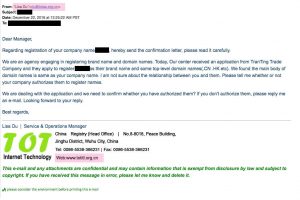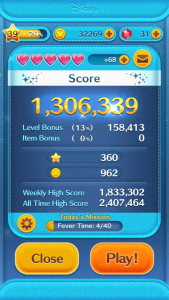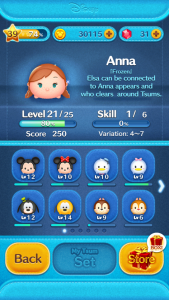Don’t you want your new keyboard to be nice and shiny and have a great “thock, thock” sound? Want to be that cool engineer that is noticeably hard at work in the office? Why buy an already built keyboard from amazon or one of those top gaming companies when you can have a totally custom and unique mini project? This is your primer to the world of custom keyboards.
What are my qualifications?
I did a quick deep dive for a few nights, read a bunch of articles, and watched a bunch of youtube of sounds. This is my first custom keyboard. 💀
There are 3 primary choices that need to be made and we’ll go through them in a simplified fashion. I’ll highlight my own personal choice in green and put the full build list near the bottom.
Case
Here is where you set the foundation for your keyboard. In this guide, we’ll talk through one of the more popular keyboard kits, there are definitely ranging options with different brands and costs, but for simplicity sake, we’ll be going over the QwertyKeys keyboard kits, which is considered above average.
Choosing the size
There are many sizes to choose from, from 60% to full size. the % usually refers to the approximate size of the keyboard compared to a full-sized layout
| Size | Description | Number of Switches |
|---|---|---|
| 60% | only includes alphanumerics keys, most common used punctuation, and a few essentials | 61 |
| 65% | essential keys omits number pad and function row | 67-68 |
| 70% | alphanumerics, some function keys, omits number pad | 75-80 |
| 75% | adds more functionality, a function row and more navigation keys | 83-87 |
| 80% | excludes number pad | 87-88 |
| Full | includes alphanumeric, function keys, navigation keys, and numeric keypad | 104-108 |
🛂 https://www.qwertykeys.com/products/neo75cu [QwertyKeys neo75cu]
Case material
This choice is mainly for looks and weight
Top case options
| Anodized Silver | Anodized Black | Anodized Grey | Anodized Navy |
|---|---|---|---|
| Anodized Purple | Anodized Burgundy | Anodized Green | Anodized Grey-gold |
| Anodized Cornflower | Spray-coated Retro White | Spray-coated White | Spray-coated Cream |
🛂 Click through the site and choose a color combination that looks good [Anodized Silver]
Bottom case options
| Option | Description |
|---|---|
| Brass | – |
| Copper | slightly denser than brass, will have more weight |
🛂 Can’t go wrong with some density [Copper]
Accent badge look
| Silver Orbit Badge | Golden Orbit Badge | Black Orbit Badge |
|---|---|---|
| Silver Nova Badge | Golden Nova Badge | Black Nova Badge |
| Silver Vortex Badge | Golden Vortex Badge | Black Vortex Badge |
🛂 Choose something that will match your aesthetic [Silver Orbit Badge]
Printed circuit board (PCB)
| Option | Description |
|---|---|
| Solder PCB | includes 2 foam fillers for the battery compartment. less likely to break |
| Wired Hotswap PCB | includes 2 stainless steel fillers for the battery compartment to add weight |
| Tri-mode Hotswap PCB | includes 2x 2200mAh batteries, allows for cable, wireless, and bluetooth |
🛂 The most durable option will be the solder PCB, but wont allow for wireless connectivity [Tri-mode Hotswap PCB]
Plate
This is a plate that helps to sandwich your switches to the circuit board. It is located between the switch and the PCB, supporting and fixing the switch, reducing the shaking of the switch during use, and protects both the switch and the circuit board. The dense materials provide a stiffer typing experience with basically no flex, have a harsher bottom out, resonate a lot and provide a higher pitch sound profile
| Material | Description | Flexibility | Sound |
|---|---|---|---|
| Steel | high hardness, heavy feeling, solid sound. common in cheap mechanical keyboards | Hard+++ | High+++ |
| Copper | hardness equivalent to steel, louder sound | Hard++ | High++ |
| CF (Carbon Fiber) | high hardness and light weight, crisp sound | Hard+ | High+ |
| Brass | firm typing feel, balanced responsiveness. deep and resonant sound | Hard | High |
| Aluminum | high hardness, light weight, dull sound | Medium | Medium |
| FR4 (Flame Retardant-4) | medium hardness, full toughness, thocky sound. same material as PCB | Soft | Low |
| POM (Polyoxymethylene) | low hardness, easy to deform, thocky sound. widely used due to popularity | Soft+ | Low+ |
| PC (Polycarbonate) | low hardness, easy to deform, thocky sound. extremely soft feel | Soft++ | Low++ |
| PP (Polypropylene) | soft and bouncy feel. soft and muted sound | Soft+++ | Low+++ |
🛂 Balance the “thock” with some crisp sounds [Carbon Fiber]
Switches
There are a ton of switches out there. Each brand has their own style, build material, lots of technical details that we’ll just skip. Decide what sound profile you prefer, listen to a few sound tests and just give it a try. I think milktooth has a great channel that just powers through a lot of switches, if they don’t have the switch you heard about, just give it a quick google; someone, somewhere has done some review on it.
| Type | Description |
|---|---|
| Linear | simplest. feel the same the moment you start pressing till bottoming out. no tactile feedback or noise when hitting the actuation point |
| Tactile | provide tactile feedback when hitting actuation point. as you press down you will notice a small bump |
| Clicky | provides an additional click sound when hitting actuation point. main advantage is that you dont have to push the key all the way down |
| Hall Effect | use magnetic switches so you can press keys really fast wihtout waiting for them to fully come back up |
Switch Types
After a lot of videos, there seemed to be a constant few that would keep popping up, it was overwhelming, so I just chose a popular manufacturer and went deep on them:
| Name | Technical Details | Type | Link |
|---|---|---|---|
| Everglide aqua king | Actuation force: 46g | ||
| Bottom out force: 62g | |||
| Total travel: 4mm | Linear | https://milktooth.com/products/aqua-king | |
| Gateron oil king | Actuation force: 55g | ||
| Bottom out force: 65g | |||
| Total travel: 4mm | Linear | https://milktooth.com/products/oil-king | |
| Gateron weightlessness | Actuation force: 50g | ||
| Total travel: 3.4mm | Tactile | https://milktooth.com/products/weightlessness | |
| Gateron baby kangaroo | Actuation force: 59g | ||
| Bottom out force: 67g | |||
| Total travel: 3.4mm | Tactile | https://milktooth.com/products/baby-kangaroo | |
| Gateron quinn | Actuation force: 59g | ||
| Bottom out force: 67g | |||
| Total travel: 3.4mm | Tactile | https://milktooth.com/products/quinn | |
| Gateron long jing | Actuation force: 48g | ||
| Bottom out force: 55g | |||
| Total travel: 4mm | Tactile | https://milktooth.com/products/longjing | |
| Haimu mulberry | Actuation force: 47g | ||
| Bottom out force: 55g | |||
| Total travel: 3.6mm | Tactile | https://milktooth.com/products/mulberry | |
| TTC venus | Actuation force: 45g | ||
| Bottom out force: 52g | |||
| Total travel: 3.8mm | Linear | https://milktooth.com/products/venus | |
| Wuque Studio WS morandi | Actuation force: 50g | ||
| Bottom out force: 60g | |||
| Total travel: 3.5mm | Linear | https://milktooth.com/products/ws-morandi |
https://milktooth.com/products/switches
🛂 When in doubt choose the most popular and trending ones [TTC venus, Everglide aqua king]
⚠️ One other thing to note is key switch stems. most will probably be the cherry mx stem, or mx-compatible, but if you encounter anything else, you should make sure that your switches and key caps are compatible. https://glacierpcgaming.com/blogs/news/understanding-key-switch-stems-why-they-matter-in-keycap-compatibility
You can do your own research, we’ll provide a few interesting youtube links here:
- https://www.youtube.com/watch?v=PwSQgOugNAs – I built the thockiest keyboard
- https://www.youtube.com/watch?v=3wAbhS73sWk – Best and worst Gateron switches
- https://www.youtube.com/watch?v=huhEfYF-lGE – Beast and worst TTC switches
Key Caps
Again there are an overwhelming amount of choice out there; from type of printing, material used, to type of key profile. We’ll go over the main points.
Material
ABS are the cheapest, most common plastic, mass-produced from easily moldable plastic. PBT are less common but usually have higher quality, resistant to wear, providing a longer lifespan.
| Pros | Cons | |
|---|---|---|
| ABS | smooth surface, affordable, readily available, allow for vibrant printing, found on stock keyboards | prone to wear and shine, less durable |
| PBT | durable, resistant to wear and shine, provides premium feel, textured surface for better grip, longer lifespan | limited color vibrancy, can be more expensive than ABS |
| POM | smooth and durable, resists wear and oil build up, unique feel, premium typing experience | limited availability, may not feature intricate designs |
| Resin | highly customizable with intricate designs, handcrafted, can be translucent | can be expensive, limited availability, may not be as durable |
| Rubber | excellent grip and tactile feedback, ideal for gaming and typing, durable and resistant, reduces typing noise | limited aesthetic options, not as common, may not be compatible |
https://hirosarts.com/blog/different-types-of-keycaps-guide/
Type of Printing
| Pros | Cons | |
|---|---|---|
| Pad printing | most common method, cost-efficient, variety of colors | worst durability, less crisp and sharp legends, not compatible with backlit |
| Double-shot | exceptional durability, high contrast and sharp, allows RGB backlighting | limited color options, more expensive |
| Triple-shot | latest evolution of double-shot, more unique color combos | limited |
| Pudding | vibrant RGB illumination, affordable, compatible with most | often made of ABS, limited tactile or sound improvement |
| Laser etching | precise, detailed, letters impossible to wear off, customizable | not as vibrant |
| Dye sublimation | highly resistant to wear and fading, vibrant colors, long lasting, sharp and vibrant legends | only works on PBT, non-backlit, limited colors and customization |
| UV printing | various keycap materials, customizable | may wear off with extended use |
Keycap Profiles
Profiles determine the overall shape and height of your keycaps, directly influencing how they feel under your fingers and how they look on your keyboard.

| Description | Height | |
|---|---|---|
| Cherry | angled tops, sculpted rows, balance of comfort and performance | 9.4mm |
| OEM | common on pre-built keybaords, angled tops, great for typing, gaming, everyday use | 11.9mm |
| SA | angled, concave tops and sculpted rows, not designed for speed | 16.5mm |
| KAT | slanted, indented tops and rows, streamlined version of SA | 13.5mm |
| MT3 | distinct design with unique angles and sharper corners on the concave tops | 16.5mm |
| GMK CYL | original “cherry profile”, ergonomic, cylindrical keys | 9.4mm |
| GMK MTNU | medium height spherical top keycap, new standard for spherical tops | 10.0mm |
| DSA | low-profile, speedy. concave tops and consistent row shape similar to XDA but shorter | 7.6mm |
| KAM | uniform design, all rows same shape and height | 19.05mm |
| XDA | flat tops, same height, ideal for fast typing | 9.1mm |
https://hirosarts.com/blog/guide-to-different-keycap-profiles/
https://hirosarts.com/blog/different-types-of-keycaps-guide/
Overview of Different Keycap Profiles
🛂 It’s always better to have many options [CYL Metropolis R2 – ABS double-shot MTNU Space Cadet – PBT double-shot]
On many forums, GMK is the gold standard of key caps. Other possibilities would be Keychron:
- https://novelkeys.com/collections/gmk
- https://mechanicalkeyboards.com/collections/gmk-keycaps
- https://mechanicalkeyboards.com/collections/keychron-keycaps
Buy List
| Name | Description | Price |
|---|---|---|
| CYL metropolis r2 | GMK ABS double-shot keycaps – midnight base set | $65.00 |
| MTNU space cadet | GMK PBT double-shot keycaps – base set | $155.00 |
| Everglide aqua king | linear switch 1x (10 switches) | $5.91 |
| TTC venus | linear switch 9x (90 switches) | $49.76 |
| Neo75cu | anodized silver case | $40.00 |
| Neo75cu plate | carbon fiber | $25.00 |
| Neo75cu PCB | tri-mode hotswap PCB | $55.00 |
| Neo75cu accent badge | silver orbit badge | $25.00 |
| Neo75cu bottom case | copper bottom | $80.00 |
| Neo75cu extras | square brass badge | $10.00 |
| Total | $510.67 |



